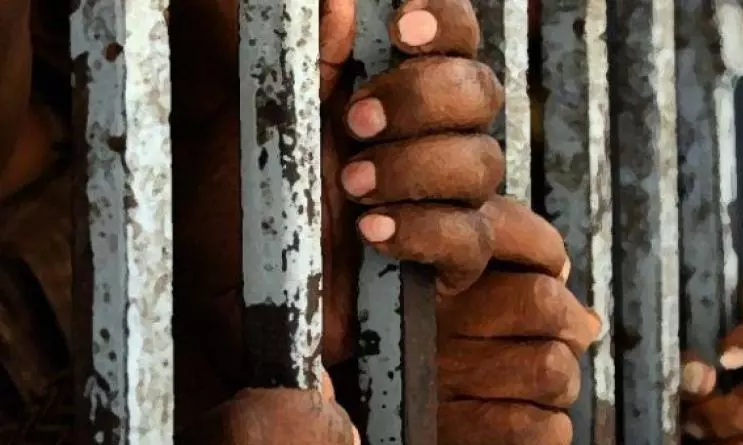
When Anuj Gupta was growing up in Chester County, dim sum was a treat.
Gupta, president and CEO of The Welcoming Center, said it was a family tradition to travel into Philly’s Chinatown for the bite-sized cuisine once a month or so. Back then, he said, you couldn’t find it anywhere else. But when Gupta’s father was recently discharged from a hospital and requested dim sum, they found a restaurant just a few minutes away, in Paoli. It was next door to a boba tea shop, another novelty of Gupta’s childhood, and both were owned by first-generation immigrants.
“That was unimaginable in the ’80s and ’90s,” he said.
Gupta’s dim sum story became the impetus for the Welcoming Center, a Philly nonprofit that promotes economic opportunities for immigrants, to study the impacts of immigrants on the Philadelphia region. The nonprofit released a report Thursday in partnership with WHYY, which detailed how immigrants in the city and its collar counties over the last decade have made major economic contributions and saved the state from population loss.
Immigrants have been a “pipeline of renewal” in the region’s economy, the Welcoming Center’s chief programming officer, Elizabeth Jones, said at a WHYY event about the report.
” They bring economic vitality, labor force, businesses. They enrich culture through food, music, literature, and art …when immigrants thrive, all communities thrive.”
Here are three key takeaways from the report and a panel discussion of local experts:
1. Pennsylvania’s immigrant population is growing, and has helped prevent population loss.
Over the last 10 years in the Philadelphia region, population growth among immigrants has been significantly greater than that of native-born residents.
In Philadelphia, native-born population growth has been negligible, while the immigrant population has grown by 23.5%, according to Census data. In Bucks County, native-born population growth neared 1%, while the immigrant population grew by 31%.
Much of Eastern Pennsylvania is experiencing slight population growth, driven in large part by immigration, while the Western side of the state‘s population is shrinking. Population loss would create a lower tax base, a smaller workforce, reduced public services and infrastructure, and less political representation, Jones said.
“In places where classrooms might be emptying and main streets might be shuttering, immigrants have the ability to literally keep communities alive … [and] viable for the long term,” she said.
The shrinking population of native-born people is driven by out-of-state migration and death rates exceeding birth rates, Jones said. Pennsylvania is only one of 11 states where adults 65 and older outnumber children. The birth rate for immigrants in the state is higher than for native-born residents.
2. Immigrants are critical to the local economy.
Most immigrants worked in the healthcare, education, manufacturing or professional business services industries.
“We shouldn’t be surprised that immigrants contribute remarkable resources and assets to our communities,” said David Byerman, CEO of Chester County, in the panel discussion.
» READ MORE: Philly’s income growth has stalled amid high inflation, leaving some stretched thin
The manufacturing and construction industries in Philadelphia are particularly supported by immigrant workers.
Foreign-born residents also make up a significant portion of the region’s “prime working-age population,” or people ages 25-54, at 57.2%.
“The amount of new businesses that our immigrant population is opening, the entrepreneurship, the contributions in especially healthcare, is just really astounding. It’s really helping to make our businesses thrive and grow in Delaware County,” said Monica Taylor, chairwoman of Delaware County Council.
Immigrants ages 25 and older have been more likely to hold a bachelor’s degree than native-born residents across Philadelphia and the collar counties. The gap has shrunk significantly over the years, with just under 44% of residents now holding bachelor’s degrees in both groups.
3. Increased U.S. Immigration and Customs Enforcement activity is making immigrant communities terrified, even when they have legal status.
The panelists also spoke about how President Donald Trump’s aggressive deportation campaign has been affecting their communities.
Taylor said that Delaware County has noticed a clear uptick in U.S. Immigration and Customs Enforcement activity, and it has made the immigrant community retreat, even those with legal status.
“We’re seeing a decrease in individuals who are trying to access services, a decrease in individuals who may be going to school,” she said.
Nelly Jiminez-Arevalo, director of Montgomery County’s Office of Immigrant Affairs, is an immigrant from Venezuela. Pointing out her own Spanish accent and brown skin, she said that she’s terrified for herself and her family, even though they are U.S. citizens.
“Some people can go back home and relax. I go back home, and I’m calling my kids every day making sure my dad came home, that everybody’s home and that everybody’s safe,” she said.
Byerman said that Chester County, where many immigrants work in its mushroom industry, has been focusing on promoting accurate information about immigration enforcement. Officials received reports of someone driving around the county in a pickup truck with signs that read “U.S. Immigration and Customs Enforcement Civilian Enforcement Corps,” and Byerman said it was important to inform the public that was not a real entity.
Jiminez-Arevalo said life has felt dire and chaotic for immigrant communities lately, but it was important to still celebrate their successes.
She showed the crowd a pocket-sized copy of the U.S. Constitution that she carries with her, filled with bookmarks and highlights, as evidence of her love for this country and hope that it will meet its best ideals.
“The day we lose hope, we all lose,” she said.



